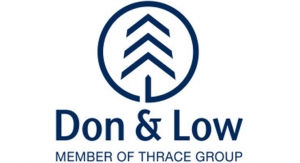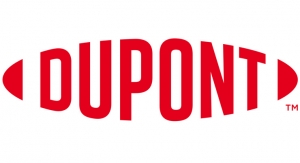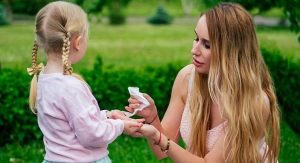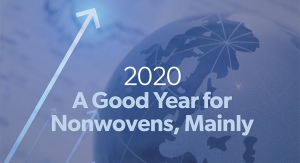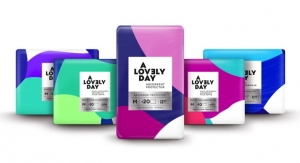10.14.20
Global demand for nonwovens in medical applications will reach $2.49 billion in 2020, as healthcare providers battle to control and defeat the Covid-19 pandemic.
Exclusive new data from Smithers shows this is a 19.2% rise compared to 2019. The 2020 peak in demand will moderate over subsequent years as, and when, coronavirus infections are brought under control; but medical nonwoven will continue to be a vital tool in hospitals and see elevated demand through to 2025.
Brand new analysis presented in the Smithers market report – The Future of Medical Nonwovens to 2025 – shows value will rise to $2.95 billion in 2025; up from $2.09 billion in 2019. Similar increases will be seen in the volume of nonwovens sold for medical use. This will rise from a surface area of 9.05 million metres square and total weight of 480,700 tonnes in 2019, to 12.94 million metres square and 674,400 tonnes in 2025.
As the medical profession adjusts to the challenges of treating Covid-19, infection control in clinical environments has become a priority; even as non-emergency medical procedures are deprioritized. Smithers exclusive market modelling tracks how this will impact demand across 21 medical nonwoven applications; including institutional incontinence products and healthcare wipes.
The main opportunity is for manufacturers of spunlaid, which represents 74.4% of this market by weight in 2020. There will also be new sales revenue for airlaid and drylaid nonwovens across this period as demand for these grows at above the market mean.
The largest increase from Covid-19 is for meltblown nonwovens used in face masks, especially the N95 or N99 types that present an effective barrier to the microscopic virus. Demand in 2020 has risen by a factor of up to 10, and has far exceeded supply. This is especially the case as international supply chains have been disrupted, and countries with a strong production footprint have prioritized domestic supply over exports. In response new capacity is being added rapidly, and industrial nonwoven lines have been repurposed to make facemask material.
This surging market is being balanced by a reduction in sales of surgical drapes and gowns as elective surgeries have been curtailed to free up resources for Covid-19 patients. These applications are the largest end uses for medical nonwovens accounting for 49%-54% of overall consumption. They should however see their own surge in demand once normalcy returns and surgeons move to reduce the backlog of operations postponed in 2020.
This brand new Smithers study combines in-depth scenario modelling for the impact of Covid-19 with analysis of existing trends in the sector, to give a comprehensive forecast of its future growth and strategic priorities. This is presented in an exclusive data set segmenting the market by nonwoven material, nonwoven production process, end-use application, and geographic and major national markets; in over 150 data tables and figures.
Exclusive new data from Smithers shows this is a 19.2% rise compared to 2019. The 2020 peak in demand will moderate over subsequent years as, and when, coronavirus infections are brought under control; but medical nonwoven will continue to be a vital tool in hospitals and see elevated demand through to 2025.
Brand new analysis presented in the Smithers market report – The Future of Medical Nonwovens to 2025 – shows value will rise to $2.95 billion in 2025; up from $2.09 billion in 2019. Similar increases will be seen in the volume of nonwovens sold for medical use. This will rise from a surface area of 9.05 million metres square and total weight of 480,700 tonnes in 2019, to 12.94 million metres square and 674,400 tonnes in 2025.
As the medical profession adjusts to the challenges of treating Covid-19, infection control in clinical environments has become a priority; even as non-emergency medical procedures are deprioritized. Smithers exclusive market modelling tracks how this will impact demand across 21 medical nonwoven applications; including institutional incontinence products and healthcare wipes.
The main opportunity is for manufacturers of spunlaid, which represents 74.4% of this market by weight in 2020. There will also be new sales revenue for airlaid and drylaid nonwovens across this period as demand for these grows at above the market mean.
The largest increase from Covid-19 is for meltblown nonwovens used in face masks, especially the N95 or N99 types that present an effective barrier to the microscopic virus. Demand in 2020 has risen by a factor of up to 10, and has far exceeded supply. This is especially the case as international supply chains have been disrupted, and countries with a strong production footprint have prioritized domestic supply over exports. In response new capacity is being added rapidly, and industrial nonwoven lines have been repurposed to make facemask material.
This surging market is being balanced by a reduction in sales of surgical drapes and gowns as elective surgeries have been curtailed to free up resources for Covid-19 patients. These applications are the largest end uses for medical nonwovens accounting for 49%-54% of overall consumption. They should however see their own surge in demand once normalcy returns and surgeons move to reduce the backlog of operations postponed in 2020.
This brand new Smithers study combines in-depth scenario modelling for the impact of Covid-19 with analysis of existing trends in the sector, to give a comprehensive forecast of its future growth and strategic priorities. This is presented in an exclusive data set segmenting the market by nonwoven material, nonwoven production process, end-use application, and geographic and major national markets; in over 150 data tables and figures.

